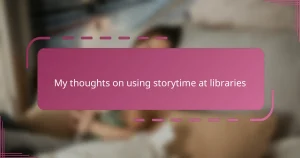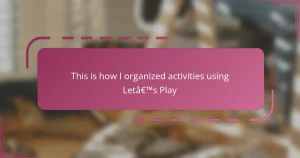Key takeaways
- Sesame Street resources foster a love for learning through engaging videos, games, and activities that are adaptable to various parenting schedules.
- The content promotes essential social skills, problem-solving, and emotional expression, facilitating meaningful discussions between parents and children.
- Interactive games, arts and crafts, and catchy songs enhance learning experiences, turning them into enjoyable and memorable activities.
- Customizing content to fit children’s interests and integrating lessons into daily routines encourage deeper understanding and connection with learning.
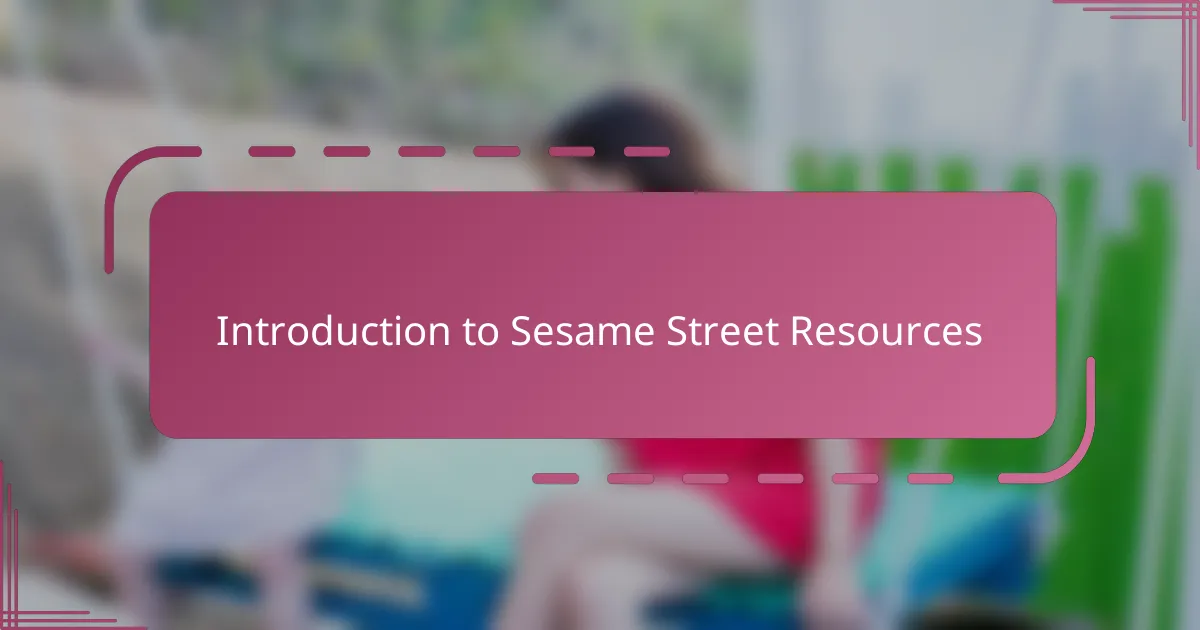
Introduction to Sesame Street Resources
Sesame Street resources have always been a treasure trove in my parenting journey. From colorful videos to engaging games, these materials bring learning to life in a way that feels natural and fun for kids. Have you ever noticed how the mix of catchy songs and lovable characters makes teaching even the toughest topics seem effortless?
When I first explored Sesame Street resources, I was amazed at their thoughtful design. Each segment feels carefully crafted to nurture curiosity, kindness, and creativity. It’s not just about ABCs and 123s; it’s about building a foundation that sparks a lifelong love for learning.
What truly stands out to me is how adaptable these resources are. Whether we’re on a busy weekday or a relaxed weekend, there’s always a way to weave Sesame Street’s magic into our day. Doesn’t that flexibility make all the difference when balancing parenting with a hectic schedule?
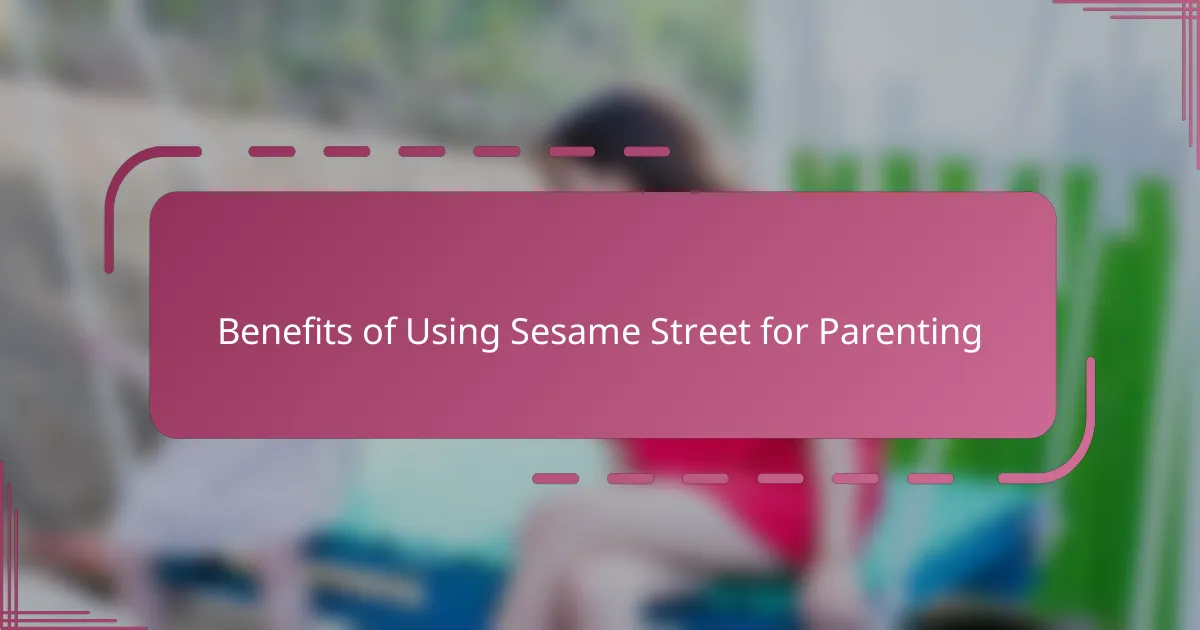
Benefits of Using Sesame Street for Parenting
What I appreciate most about using Sesame Street in my parenting is how it helps my child develop essential social skills without me having to constantly intervene. Have you ever seen your little one mimic sharing or saying “please” after watching their favorite characters? It feels like a gentle boost that supports the values I’m trying to instill.
Another benefit I noticed is the way Sesame Street encourages problem-solving. When my child encounters a challenge on the show, they often try to think it through, just like their beloved characters do. It’s thrilling to watch curiosity ignite and see them eager to tackle real-life situations with newfound confidence.
I also find comfort in the variety of topics Sesame Street covers—it’s more than just early academics. From emotional expression to cultural awareness, these resources open doors for meaningful conversations I might not have thought to start. Isn’t that what parenting is all about: finding those moments that deepen connection while educating?
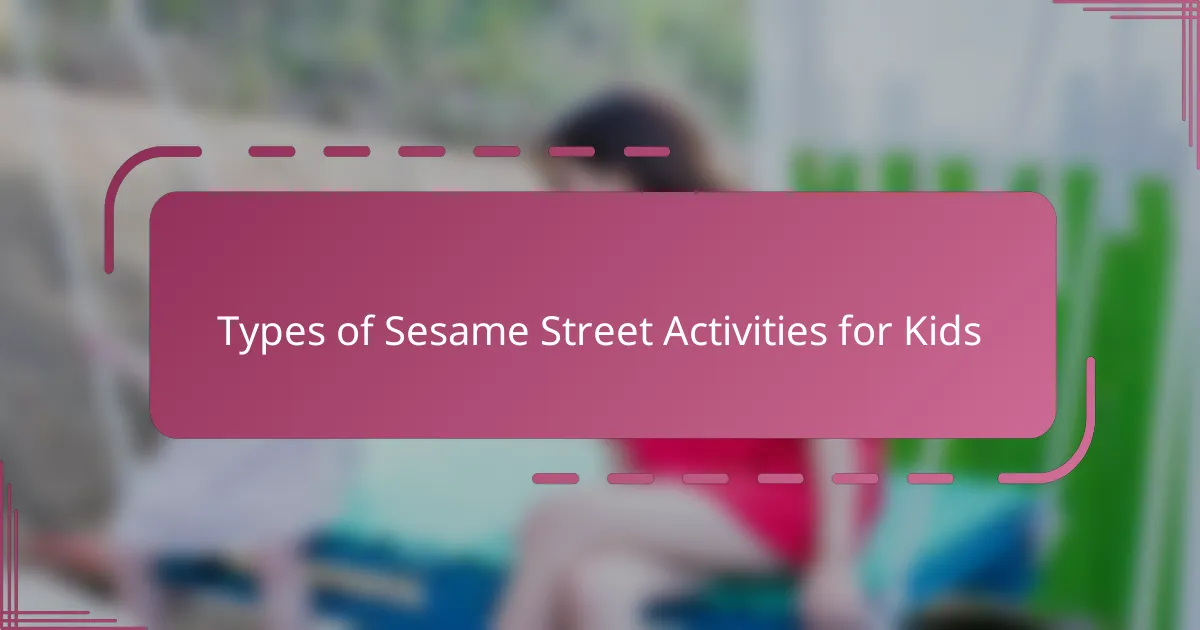
Types of Sesame Street Activities for Kids
One of the types of Sesame Street activities I found most engaging for my child were the interactive games online. These games are designed to get kids moving and thinking at the same time, which I love because it helps my little one stay active while learning letters or numbers. Have you noticed how games with familiar characters suddenly make learning feel less like a chore and more like playtime?
Another category that truly captured my child’s attention was the arts and crafts projects inspired by Sesame Street. Using simple household items to create characters or scenes from the show made our afternoons feel creative and special. It’s amazing to see how a bit of paint or paper can turn into a fun extension of the lessons from the show, don’t you think?
Of course, I can’t forget the catchy songs and sing-along videos that Sesame Street offers. These aren’t just entertaining; they’re a perfect way to reinforce concepts like counting, the alphabet, or even emotions. Watching my child hum these tunes hours later makes me realize how music sticks in the mind and turns learning into a memorable experience. Have you ever caught your child spontaneously singing a Sesame Street song and smiled because you knew just what they were absorbing?
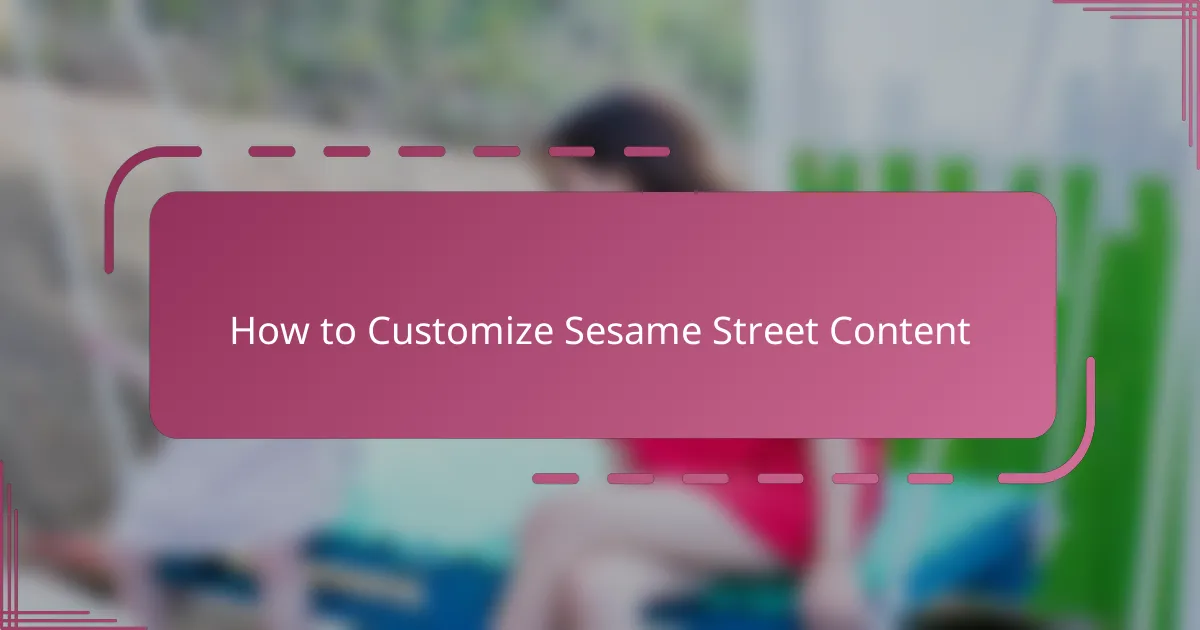
How to Customize Sesame Street Content
One of the first things I did to customize Sesame Street content was to tailor it to my child’s interests and current learning stage. For example, when my little one was obsessed with Elmo, I focused on videos and games featuring him, which made lessons on emotions more relatable and engaging. Have you ever noticed how a familiar character can transform a simple activity into an eagerly awaited moment?
I also found that adjusting the pacing made a big difference. Sometimes, I paused a video to ask questions or to let my child explore a concept before moving on. This little tweak turned passive watching into an interactive experience that felt more like a back-and-forth conversation than just screen time. Doesn’t that kind of engagement make the learning stick better?
Another customization trick I often use is integrating Sesame Street themes into our daily routines. Whether it’s using Cookie Monster’s love for cookies to teach sharing or repeating a Grover song during bath time, weaving these elements into real-life moments often makes the lessons feel more natural. Have you ever tried mixing screen content with everyday activities and found it deepens your child’s connection to what they’re learning?
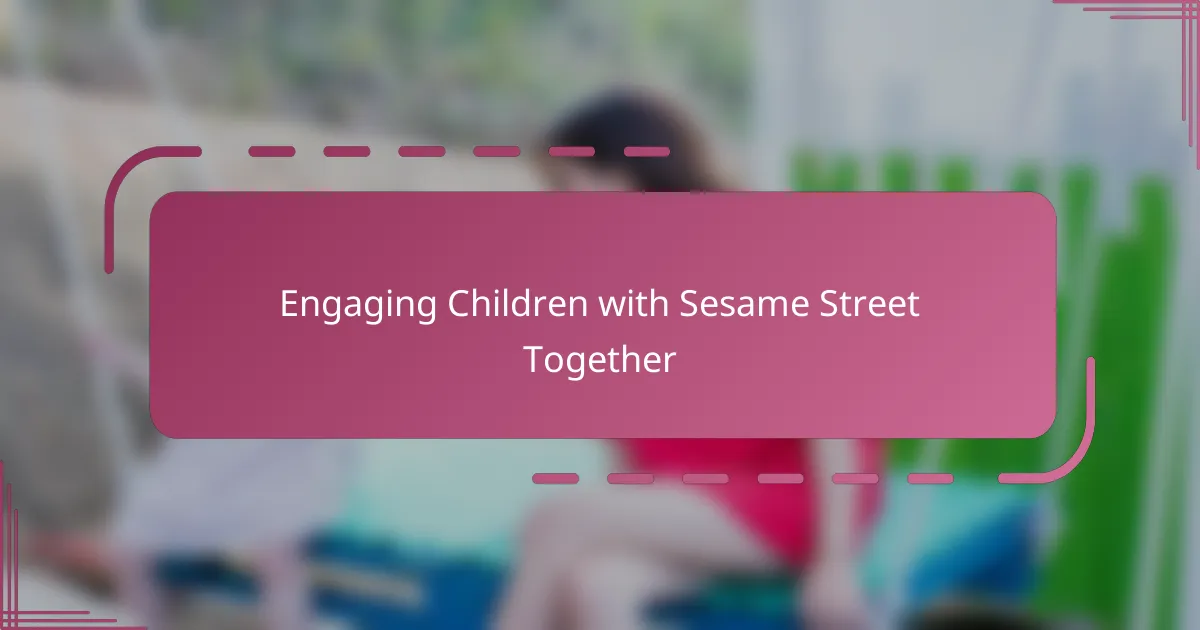
Engaging Children with Sesame Street Together
One of the most rewarding moments I experienced was sitting alongside my child while watching Sesame Street together. Sharing those giggles over Elmo’s silly antics and pausing to talk about what Big Bird was learning not only made the experience fun but also strengthened our bond in a way that felt natural.
Sometimes, we take turns answering questions the show poses or reenacting scenes, which turns screen time into quality time. Have you ever noticed how this kind of joint engagement makes learning feel like a team effort rather than a solo activity?
What really surprised me was how these shared moments sparked deeper conversations later in the day. My child would bring up ideas from the show during meals or playtime, showing me that engaging together planted seeds of understanding that grew beyond the screen. Doesn’t that remind us why co-viewing matters so much?
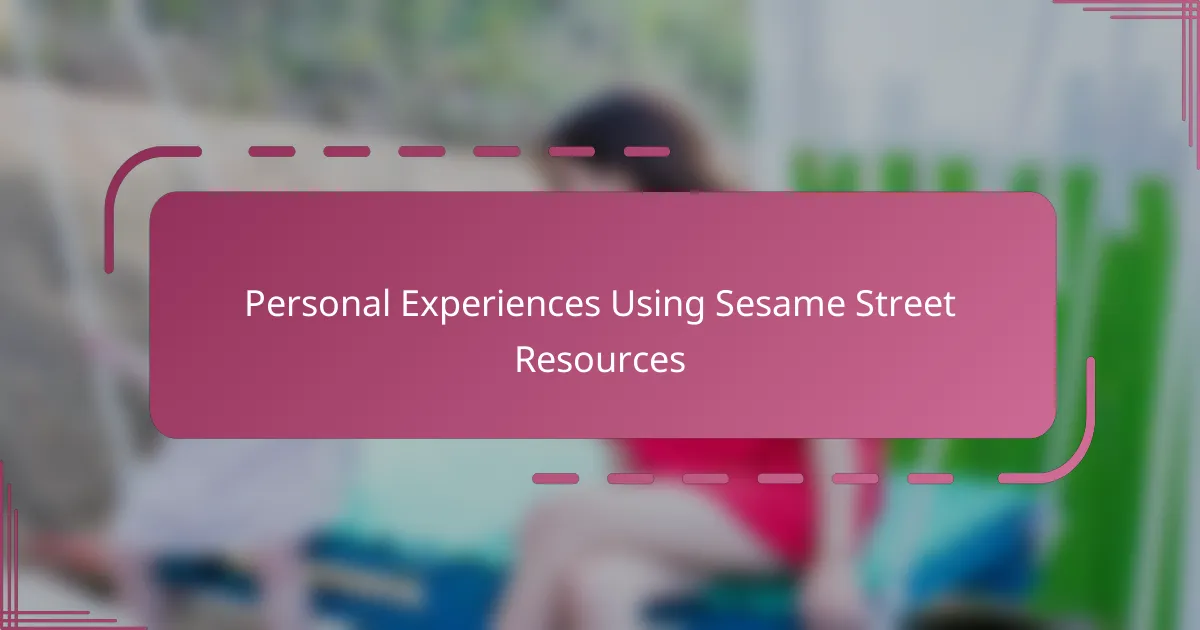
Personal Experiences Using Sesame Street Resources
Using Sesame Street resources felt like opening a door to a world where learning and play seamlessly blended. I remember watching my child’s face light up during the “Count with Cookie Monster” segment, and it reminded me how effective these moments are in turning abstract concepts into relatable fun. Have you ever caught yourself smiling just watching your child discover something new in such a joyful way?
There was one afternoon when my little one was struggling to understand feelings of frustration. We revisited the “Feeling Faces” videos together, and I noticed a shift—not just in comprehension but in empathy. It was touching to hear my child say, “Big Bird gets upset too,” showing that Sesame Street’s gentle lessons had made emotions less confusing and more approachable.
Another experience that stays with me is how the varied formats kept my child engaged. Sometimes, a colorful book from the Sesame Street collection sparked quiet, focused moments, while at other times, the energetic sing-alongs got us both moving around the living room. Isn’t it wonderful when a resource can feel fresh and exciting, no matter the mood or time of day?
